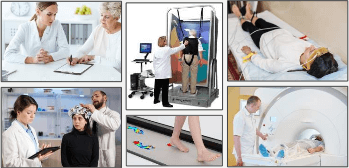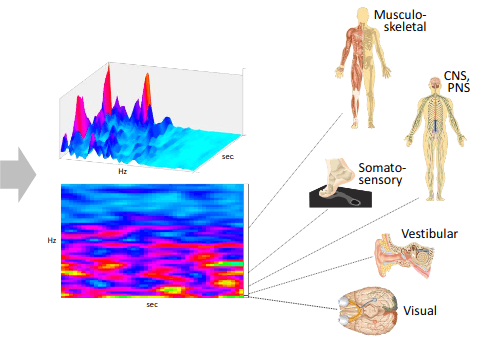Innovations that Impact Millions
Many neurological conditions lead to widespread disruptions throughout the brain, causing patients to suffer from impairments to multiple physiological systems throughout the body.
Current solutions for diagnosing these multiple impairments, and monitoring the effectiveness of treatments and rehabilitation, either:
(i) require multiple time-consuming tests carried out by multiple clinical specialists using expensive lab equipment; or
(ii) they’re limited to subjective observations and reliance on patient self-reporting.
Phybrata sensing, pioneered by PROTXX, delivers a powerful new solution that enables much easier to use precision neurophysiological assessments to be carried out in any doctor’s office or via remote patient care.
- Dramatically increases patient access to higher quality healthcare and improved outcomes.
- Saves billions of dollars in healthcare cost inefficiencies.

All Of This

Or Just This
Transformational Technology
One-Minute, Non-Invasive Phybrata Test identifies, quantifies, and monitors impairments to multiple physiological systems based on their unique contributions to biomechanical stabilization of the head and eyes as the reference platform that the body relies on for balance and movement.
The PROTXX Machine Learning Engine exploits unique features in phybrata signals to derive digital biomarkers that classify impairments to different physiological systems based on their unique biomechanical vibrational signatures.
Thoroughly Validated Innovations
- Multiple peer-reviewed publications
- 21 patent applications
- Decades of R&D
- clinical research in human balance and movement
- systems engineering research in designing robots that can mimic human motion.


Contact us to Explore R&D and Laboratory/Clinical Pilot Opportunities with Next-Generation PROTXX Solutions:
CLINIC RPM:
Phybrata gait analysis and enhanced ease-of-use enable comprehensive at-home neuromotor testing.


SYNTHETIC DATA:
Synthetic phybrata data sets preserve the visual, analytical, and diagnostic behavior of phybrata signals from healthy and impaired clinical populations, providing a powerful new tool for data sharing and biomarker development.

R&D opportunities with PROTXX span the diagnosis, treatment, and rehabilitation of a growing range of injury, disease, aging, and genetic-disorder related neurological conditions: concussions, stroke, Parkinson’s disease, multiple sclerosis, peripheral neuropathies, vestibular disruptions, invasive neurosurgeries, ALS, Huntington’s disease, pharmaceutical testing and clinical trials